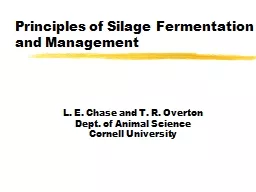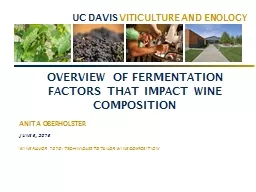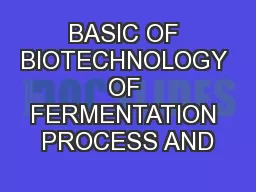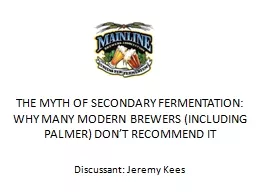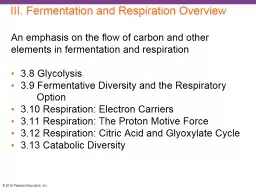PPT-The Myth of Secondary Fermentation: Why Many Modern Brewers
Author : olivia-moreira | Published Date : 2016-02-24
Discussant Jeremy Kees Why use a Secondary Remove beer from the yeast cake trub Autolysis To quote John Palmer How to Brew 1ed When a yeast cell dies it
Presentation Embed Code
Download Presentation
Download Presentation The PPT/PDF document "The Myth of Secondary Fermentation: Why ..." is the property of its rightful owner. Permission is granted to download and print the materials on this website for personal, non-commercial use only, and to display it on your personal computer provided you do not modify the materials and that you retain all copyright notices contained in the materials. By downloading content from our website, you accept the terms of this agreement.
The Myth of Secondary Fermentation: Why Many Modern Brewers: Transcript
Download Rules Of Document
"The Myth of Secondary Fermentation: Why Many Modern Brewers"The content belongs to its owner. You may download and print it for personal use, without modification, and keep all copyright notices. By downloading, you agree to these terms.
Related Documents



